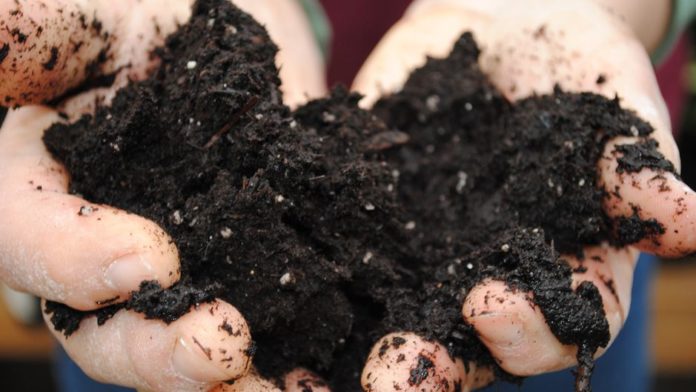
Scientists have discovered a powerful new antibiotic with the ability to kill some of the most dangerous drug-resistant infections. The antibiotic, which was extracted from a dirt sample, also has properties that make pathogens less susceptible to becoming resistant in the future, giving hope that its discovery will be a turning point in the fight against evolving drug-resistant “superbugs”.
Superbugs, which can’t be killed by antibiotics, are a growing threat to public health, sickening 2 million Americans a year and killing at least 23,000, according to the Centers for Disease Control and Prevention. Researchers have warned that the world is at risk of entering a “post-antibiotic” era in which patients could die from formerly treatable infections and even routine surgeries could become dangerous. Some estimates suggest the global death toll from drug resistance could rise to a staggering 10 million annually by the year 2050, unless new solutions are found.
Developing new antibiotics has been a challenge, in part because of the huge cost. Finding and testing antibiotics can take a decade and more than $1 billion. Many pharmaceutical companies have discontinued this line of research due to poor returns on investment in contrast with drugs for chronic illnesses. Only two new antibiotics have been approved since 2009.
Finding new antibiotics has also been scientifically difficult. Most of the antibiotics used in human and animal medicine today come from soil microbes, which produce the toxic compounds to fight off other enemy microbes. For example penicillin, the first successful antibiotic, comes from the soil fungus Penicillium. Although dirt is filled with germs, scientists until now haven’t been able to grow these bacteria in a laboratory – a key requirement for studying and testing them. As a result, only about 1% of soil bacteria has been cultured in the lab, meaning that approximately 99% of the microbes on our planet remain under-researched as sources of new antibiotics.
Now, scientists from Northeastern University in Boston have invented a “contraption” to grow germs that could allow them to study about half of soil bacteria, vastly increasing the pool of drug candidates, according to lead researcher Dr. Kim Lewis and colleagues, who reported their findings in the journal Nature.
Resistant to resistance?
Dr. Lewis’ team used a device they call the iChip, which sorts individual bacterial cells harvested from soil into tiny chambers sandwiched between two semi-permeable membranes. They then bury the iChip back in the ground, where molecules from the soil seep into the chamber, giving the bacteria the sort of environment in which it naturally likes to reproduce. Once the bacteria have begun growing in the iChip, they seem to have no trouble continuing to reproduce in a lab dish, the researchers say, allowing them to produce bacterial colonies large enough to research back in the lab.

Researchers used a new device called an iChip (pictured above) to culture soil bacteria in a controlled laboratory setting.
By repeatedly using the diffusion chamber to culture different species of soil bacteria, the team was able to test about 10,000 compounds, out of which they found 25 new antibiotics, and one of them — which they call teixobactin — stood out.
In the lab, teixobactin killed a dangerous bug called MRSA, or methicillin-resistant Staphylococcus aureus, in mice. Teixobactin also killed a type of drug-resistant tuberculosis. But teixobactin was unable to kill one of the worst of all superbugs — a deadly infection called Klebsiella pneumoniae, which has evolved to resist all known antibiotics.
Because of the particular way teixobactin kills bacteria — by breaking down the bacterial cell wall — germs won’t easily be able to evolve ways around it, says Dr. Gerard Wright, a professor of biochemistry at Canada’s McMaster University in Hamilton, Ontario. It took four decades for bacteria to become resistant to similar antibiotics, says Dr. Wright, who was not involved in the new study but wrote an accompanying editorial.
“Teixobactin’s dual mode of action and binding to non-peptidic regions suggest that resistance will be very difficult to develop,” adds Dr. Lewis. Indeed, he and his colleagues found that repeated exposure to the drug did not produce any resistant mutations in Staphylococcus aureus or Mycobacterium tuberculosis, the bacterium that causes most cases of TB.
Resistance can’t be ruled out
While these initial results are promising, experts caution that resistance cannot be ruled out in the long run. “They didn’t find resistance in a couple of simple tests, so it won’t happen in a minute, but there is no compound on this planet that bacteria will not develop resistance to,” Dr. Richard Novick, an NYU Langone Medical Center professor who wasn’t involved in the study, told the Washington Post. “But it would certainly happen more slowly with this one.”
It’s also important to keep in mind that researchers have tested teixobactin only in mice. Human trials are still two years away, Dr. Lewis says, and completing those human trials will take three years. Teixobactin produced no serious side effects in mice, but doctors don’t yet know if it will be safe enough for people; most drugs that appear promising in animals fail to pass human tests. And even if human tests are successful, teixobactin won’t be on the market for at least five years.
Still, scientists are excited about the possibility of adding new antibiotics to medicine’s arsenal. “In a field dominated by doom and gloom,” wrote Dr. Wright, the new findings “offer hope that innovation and creativity can combine to solve the antibiotics crisis.” Indeed, other scientists are working on tackling the drug-resistance problem from different angles. For instance, researchers at Duke University recently developed a new computer program that anticipates a superbug’s next resistant mutation to a new drug.
